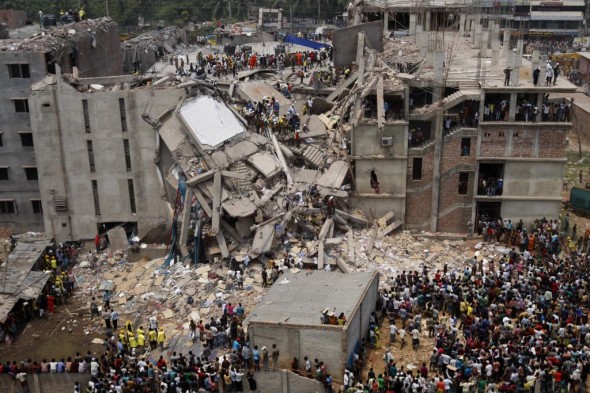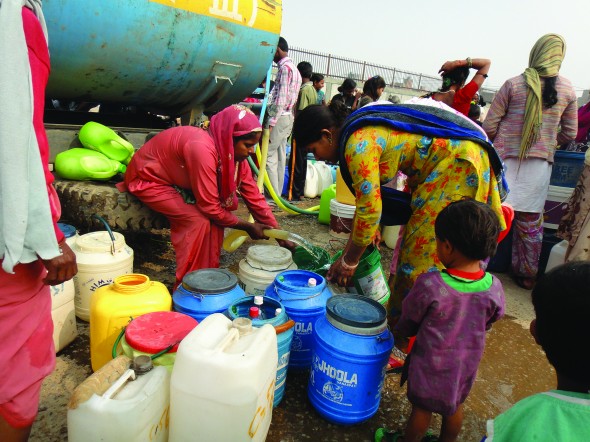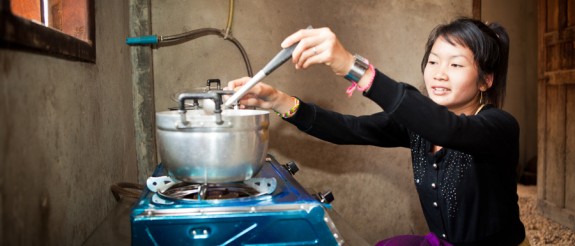The Guardian US/UK | September 16, 2013

A smiling face made from nature that was found along a hiking path. Photo credit: Frerk Meyer/Creative Commons
Whether it’s words of wisdom from the Dalai Lama, guidance from an empathetic career counselor or advice from a friend, we’re often told that it’s more important to be happy than anything else.
But for the more than 1 billion people around the world fighting hunger and poverty, happiness seems fairly irrelevant – a luxury for the middle and upper classes. Does happiness matter if daily needs are not met? Certainly the primary focus should be on taking care of the basics. Happiness is a bonus.
Most, it seems, would agree. But increasingly, the answer depends upon whom you ask. In certain academic and human development circles, the stock in happiness has been rising. So much, in fact, that in the last two years, the United Nations Sustainable Development Solutions Network (run by UN Millennium Development goals guru and Columbia University economist Jeffrey Sachs) has published the “World Happiness Report,” researchers’ attempts to measure happiness in 150 countries around the world.
That raises the question: As more thought leaders pay attention to happiness, should companies also consider happiness as one measure of their social impact?
“All businesses should care about happiness,” said Mark Williamson, founder and director of the London-based Action for Happiness Project, who joined Sachs in New York last week to release the latest report. “The happiness of a company’s people is vital to their business success.”
Companies with happier staff outperform their competitors, Williamson said, and a happier staff is sick less often, more engaged, more creative, more productive and better at working collaboratively.
Consumer-facing businesses also affect the wellbeing of their customers, production services and their supply chain, Williamson added, so responsible businesses should not be hawking products or services that they know will decrease wellbeing.
The happiness metric: more important than GDP?
Government will likely play a role in driving the happiness agenda, if it progresses. “There is now a rising worldwide demand that policy be more closely aligned with what really matters to people as they themselves characterize their wellbeing,” said Sachs, one of the report’s co-editors.
Life satisfaction – a self-evaluation of how well a person’s life is going – is the cornerstone of what the report aims to measure. According to researchers, a person’s happiness, or wellbeing, can be traced back to GDP per capita (as a measure of one’s standard of living), but also to the extent of one’s social support, freedom, generosity, healthy life expectancy and perceptions of corruption.
In recent years, Williamson said, Sachs came to believe in wellbeing’s potential as the “ultimate beyond-GDP measure.” Sachs, a senior advisor on sustainable development to Secretary-General Ban-Ki Moon, is pushing to place wellbeing at the heart of the UN’s post-2015 Sustainable Development goals.
Does more happiness really mean more sustainability?
But is a goal to improve the life satisfaction of people around the world really a means to an end? How would this accelerate or enhance ongoing work to secure access to clean drinking water and sanitation facilities, a sustainable food supply and a stable source of education?
“Wellbeing is really the driver that underpins all the development goals,” Williamson said. “Whether we’re aiming to alleviate poverty, ensure maternal health, support gender equality, or promote sustainability, the reason that all these things matter ultimately comes down to their impact on human wellbeing.
“If we get them right, wellbeing goes up,” he said. “If we fail to deliver on them, wellbeing goes down.”
Mental health and productivity
But even Bhutan, the world’s most famous proponent of happiness, is starting to cast doubt on its devotion to the measure. Its society struggles with a range of social concerns including poverty, education, unemployment, gender inequality and a perceived increase of corruption – and even, perhaps, mental illness.
Yet Williamson points to both ends of the scale in this year’s World Happiness Report as examples of wellbeing’s power. The happiest countries – Denmark, Norway, Switzerland, Netherlands and Sweden – all have reasonably high GDP, he said, but likely rank high on happiness because people in these countries tend to have higher levels of social support and more collaborative and supportive social systems than most other developed economies.
On the other hand, countries that experienced the greatest falls in happiness over the last year – Greece and Egypt – are countries whose residents have had to contend with massive upheavals to financial and political systems that influence their quality of life. And it’s no surprise that Syria – now in the spotlight for atrocities inflicted on citizens throughout its ongoing conflict – placed among the most unhappy countries worldwide.
Another reason to include wellbeing in the UN post-2015 Sustainable Development goals, Williamson said, is that its existing goals do not include mental health, something he considers to be the among most important determinants of wellbeing. According to the report, mental illness – which counts depression and anxiety among its forms – is among the main causes of unhappiness worldwide.
Unhappiest people get happier
Perhaps some of the greatest insights into the determinants of wellbeing can be gleaned from the region with countries ranked among the least happy worldwide. All are in Sub-Saharan Africa, a region where residents battle infectious disease, poverty and corruption.
Yet at the same time, Sub-Saharan Africa – along with Latin America – is counted in this year’s report as one of two areas where happiness levels are increasing the most. The reasons? Higher levels of social support, generosity and the freedom to make key life decisions, the report said.
“Social relationships matter much more for happiness than possessions,” Williamson said. “Every organization should recognize that human wellbeing is at the heart of success and progress – and that they can play a role in contributing to this by the way they treat their people, the products and services they offer and the impact they have in the community.”
Bringing happiness to mainstream business
Some organizations, like John Lewis, have always put employee wellbeing at the heart of their business models, Williamson said. But happiness is gaining ground: companies such as Southwest Airlines, BT, Semco, Marks & Spencer, Zappos, Innocent Drinks and NixonMcInnes are increasingly taking it seriously, he added.
Happiness hasn’t yet become a top priority for sustainability-minded companies, but Williamson expects the trend to persist. And if its popularity continues to rise among nonprofits, policymakers and thought leaders, we could soon see it become a common corporate social responsibility metric as well.
Should businesses consider happiness as part of their social impact? And what can businesses do to boost happiness? Please send us your thoughts by commenting below or by tweeting #GSBhappy.
View the original story here.



 The company grew from one pilot location in 2007 to more than 200 filtration station-ATM combos in villages of at least 5,000 people each across India. One resident per village can purchase a franchise for about 30,000 Indian rupees, about $500, and sell the filtered water for a penny per liter, he said.
The company grew from one pilot location in 2007 to more than 200 filtration station-ATM combos in villages of at least 5,000 people each across India. One resident per village can purchase a franchise for about 30,000 Indian rupees, about $500, and sell the filtered water for a penny per liter, he said. Sarvajal has secured the go-ahead from the local government in the metropolitan area around New Delhi to set up some 50 filtration station-ATM units — areas without regular access to drinking water.
Sarvajal has secured the go-ahead from the local government in the metropolitan area around New Delhi to set up some 50 filtration station-ATM units — areas without regular access to drinking water.